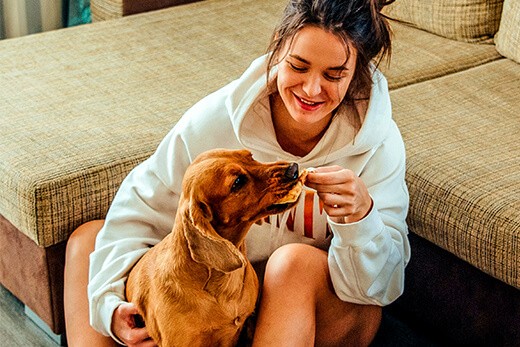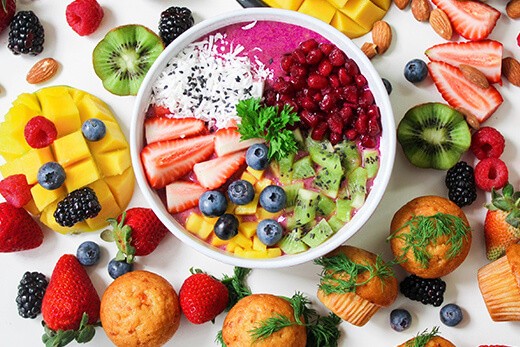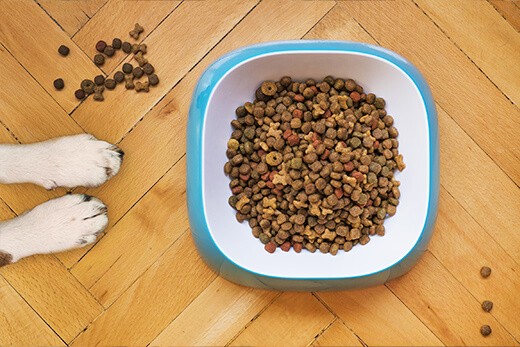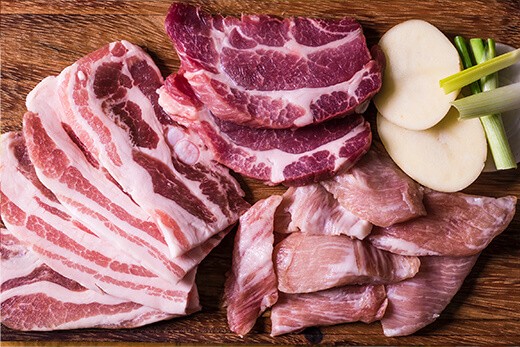Can My Dog Eat Human Food?

First... A Quick Disclaimer
While this information was compiled from several reasonably reliable sources, this does not preclude your dog from having specific sensitivities or allergies not accounted for here, for more specific information on your situation I strongly advise you consult a veterinary nutritionist about your concerns.
Furthermore, while I certainly consider myself more knowledgeable than most, I am not a veterinary nutritionist, so any advice I give is based on my research and experience and should be considered with that in mind.
Download PDF
Use this link to download a printable list of human foods which I regularly feed to my own dogs
Can I Feed My Dog "Human Foods?"
If you’re making a rule for a household with children, then I believe abstinence is the best policy here, a lot of the things we eat are just too salty, too spicy, and even toxic to our dogs. This can lead to a wide range of symptoms including moodiness or upset stomach, to organ failure and even death.
That said, with a very reasonable amount of caution and moderation there’s no good reason your dog can’t enjoy, and even benefit, from eating a surprisingly wide range of traditionally “human” food options.

Safe Foods
Using the link above will download a PDF version of the full list of the foods I do and don’t feed to my own dogs. This list compiles nearly 200 unique foods, and rates them as Very Good, Good, Okay, Bad, Very Bad, and Uh Oh. This is meant to provide a quick reference guide, which can easily be printed and posted in your kitchen.
Please note that items suggested on this list are typically meant to be fed “unprepared” by human standards. Even foods which aren’t specifically toxic, are generally considered inappropriate for dogs once they are fully cooked and seasoned. Feeding raw food to dogs is still a controversial topic on it’s own and really requires it’s own post, (when I climb that mountain I’ll link it HERE).
With all that in mind, any of the foods listed as Very Good will typically make for fantastic regular additions to your dog’s diet, while anything Good or Okay will make a really great occasional treat. Bad items are not likely to harm your dog in small quantities but are defiantly better off avoided, meanwhile Very Bad items should absolutely never be fed to your dog intentionally. Finally, the foods in the Uh Oh category are all highly toxic or otherwise hazardous and can seriously harm your dog even in small doses, if your dog eats anything on the Uh Oh or Very Bad lists, you need to monitor them closely for signs of distress (e.g.; diarrhea, constipation, vomiting, food refusal, lethargy, excessive scratching, bloating, etc.) and seriously consider seeking medical assistance.

Supplementing Kibble diets
When taken to the next level we can even start to supplement our dog’s diets’ using some typically human foods. While most kibbles provide a balanced nutritional profile, they do so through the inclusion of a large number of additives. It’s clearly possible for dogs to survive long-term eating nothing else but kibble, but it should also be obvious that such a diet is seriously lacking in fresh, whole, biologically appropriate sources of nutrition, if this seems sensational just imagine feeding your children kibble 3x a day and you’ll understand what I mean.
Things like muscle meat, organs, skin, bones, feathers, digestive contents, fur… these are the natural staples of a dog’s diet, just as the staples of the human diet include fruits, vegetables, and arguably cooked meats, fish, and grains.
Is it possible for dogs to survive long-term on nothing but kibble? Yes, of course it is… but it’s possible in much the same way that it’s possible for a human to survive on nothing but fast food, coffee, and TV dinners. Possible? Sure, if you’re careful enough you might even get all the nutrients you need, but that’s not the same as being the healthiest option, or even necessarily a good one.
So if I was looking to supplement a primarily kibble based diet I would focus on adding;
- raw, (or at least unseasoned/unprepared), meat and organs,
- raw bones (cooked/smoked bones can splinter),
- vegetables,
- fruits,
- and possibly some light grains for added fiber.

Supplementing Raw diets
Full disclosure, this is what I do. I buy my raw food in bulk from a local retailer, (sending love to The Raw Company here in Cambridge,) who in turn sources their ingredients locally.
Frankly, it’s possible to prepare your own raw dog food, but the effort – and ick factor – involved is just beyond me. Just calculating and maintaining a balanced nutritional profile is really complex, but sourcing some of the things you will need will not only be difficult, but prohibitively expensive if you aren’t buying in massive bulk orders. And then there’s the storage… How much freezer space have you got? Can you fit half a cow in there? If not, then making your own raw from scratch probably isn’t for you.
At any rate, assuming you have decided to start feeding raw, (again, this is a whole other topic, I’ll cover it at some point and link it HERE when I do), however the best things to supplement a raw diet in my experience are;
- Raw bones (preferably ribs, backs, small heads, and soft bones like chicken feet),
- Skin treats (e.g.; cow noses, pig ears, whole chicken parts)
- Green and other high-fibre vegetables (e.g.; cabbage, kale, carrots, sweet potatoes,)
- Light grains (e.g.; flax, hemp, and chia seeds).
With prepared raw food diets your dog is getting a wonderfully, biologically appropriate diet made using nearly whole animals, and while they definitely include a certain amount of ground bones, in my experience, there is typically not enough fibre for dogs to comfortably digest and pass these diets, so adding some extra fibre is typically something they will thank you for. Not to mention that raw beef ribs are the favourite treat/chew toy of nearly every dog I’ve trained.
Conclusion
As I am lazy, my preferred method of adding fiber to my dogs’ diets is I keep a blend of;
- 2 parts flaxseed,
- 2 parts chia seeds,
- 1 part hemp seeds.
I use a dedicated coffee grinder to blend about 2-4tbsp which I soak in 1x cup of hot water then mix into their raw food once daily. While I freely admit this is not technically the most biologically appropriate thing to feed my dogs, I firmly believe they benefit from the added fiber, and they definitely enjoy having the fuller bellies. Of course, this is in addition to regularly feeding them;
- Beef ribs,
- Pigs ears,
- Chicken (whole parts; meaning skin and bones included),
- Pig hearts,
- Cows livers,
- The occasional Partial/whole rabbit or duck.
However, this is just what works for me and my dogs, as you’re now aware however, there are a number of alternatives for supplementing your dog’s diet which can be found right at your local grocery store. So, get creative, maybe search some recipes online, or just see what your dog likes, and have some fun with it.
Hope this helps,
Mike